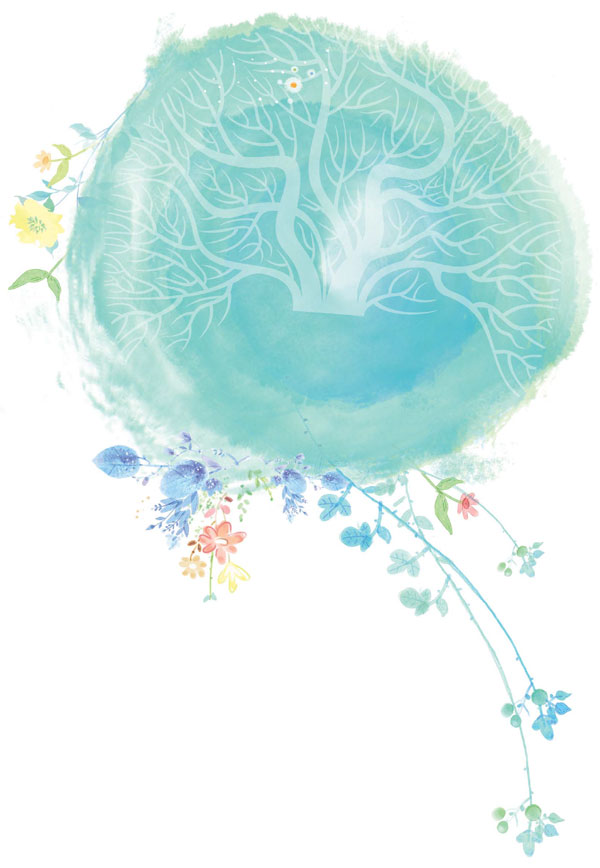The character 育 (yù) begins to influence Chinese speakers from their first breath and plays a big role as they are raised and educated
A growing population is generally seen as essential for us to survive as a species, a concept deeply engrained in early human civilization.
The worship of fertility-inspired art and religion dates back 30,000 years, specifically to a fertility goddess sculpture with exaggerated female reproductive anatomy - the famous Venus of Willendorf, a statuette discovered at a Paleolithic site in Austria.

Today, we think of ourselves less as a gift from the goddess and more the legacy of our parents, but we are so much more than their chromosomes. Environment, or "nurture", plays a big role in shaping us into the people we are. Our character of the day is 育 (yù), meaning both "to give birth" and "to nurture, educate".

As you might imagine, the linguistic aesthetics of birth are as old as human history. On the oracle bones, the character for "birth" is quite self-explanatory. On the top of the character is the shape of a woman, on the bottom is an upside-down baby. Together, it creates the scene of a woman in labor.
Sometimes, in the top half the woman takes the simplified form of "人" (rén, people), other times it is the complicated " 每 "(měi, here indicating a woman wearing hair accessories, a usage lost in modern Chinese). Three dots were later added at the bottom of the character, which refer to the spilled blood of labor.
Later still, as the characters developed, their pictographic quality gave way to evolved forms that were more standardized and easier to write.
The simpler version of the word became 后 (hòu); a character that evolved to have the meaning of both birth and a title - equivalent to sovereign. This as well as the fact that 后 was the title of the chief of a matriarchal tribe has led scholars to believe that there was a connection between fertility and power. This usage is still in today's language, as in 王后 (wánghòu, queen) and 皇后 (huánghòu, empress).
Be aware that in simplified Chinese 后 also means "after, back" or "behind", as in 先后 (xiānhòu, before and after); but in traditional Chinese, the different meanings are represented by two different characters: 后 and 後 (hòu).
The more complicated version of the word became 毓 (yù), in which the 每 radical was moved from top to left and the upside-down baby to the top right while the three dots of blood were elongated and positioned at the bottom right. 毓 means not only "to give birth", but also "to nurture", as in the phrase 钟灵毓秀 (zhōng líng yù xiù), which means "a good environment nurtures good talent".
However, the most commonly used word for "birth" and "to nurture", 育 , has a much later origin. It was in the Han Dynasty (206 BC- AD 220) that the character first appeared in seal script. This time, the upside-down baby was put on top of the character, while the bottom radical, 月(yuè), indicated its pronunciation. Together, they formed 育 (yù), meaning "to give birth" "to raise" and "to nurture, educate", such as in 生育(shēngyù, to give birth), 养育 (yǎngyù, to raise, nurture), and 教育 (jiàoyù, to educate).
First and foremost, 育 is related to birth and fertility and can be exemplified by words such as 育龄 (yùlíng), or "childbearing age"; 节育 (jiéyù), or "birth control"; 绝育 (juéyù), or "to sterilize"; and 不育 (búyù), or "infertility". As the country with the largest population, China implemented (计划生育 jì huà shēng yù) or family planning, as one of its national policies. Recent changes to this policy allow a second child for a couple and no longer encourage late marriage and late childbirth, or 晚婚晚育 (wǎnhūn wǎnyù).
Secondly, 育 is related to "nurture". To cultivate is 培育 (péi yù), to feed and foster is 哺育 (bǔ yù). Child care is 保育 (bǎo yù), nursing a baby is 育婴 (yù yīng). Of course, such care is not limited to children. For instance, 育苗 (yù miáo) means "to grow seedlings".
Finally, the most frequent combinations of words with the character 育 are related to education. For instance, physical education is 体育 (tǐ yù), 智育
(zhì yù) is "intelligence education", and 德育 (dé yù) is "ethical education". When you add in the ubiquitous 爱国主义教育 (ài guó zhǔ yì jiàoyù)or "patriotic education", it is indeed a lot to learn.
Throughout the journey to adulthood, 育 seems to be a constant theme in our lives. It makes us who we are, and, for better or worse, our species marches on.
Courtesy of The World of Chinese, www.theworldofchinese.com
The World of Chinese
(China Daily European Weekly 03/04/2016 page23)
